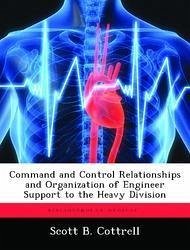Nicht lieferbar

Command and Control Relationships and Organization of Engineer Support to the Heavy Division
Versandkostenfrei!
Nicht lieferbar
This study is an analysis of the command and control (C2) and organization of divisional and corps engineer units which provide engineer support to the AOE heavy division. The paper assumes that the U.S. Army operations across France and Germany during 1944 and 1945 offer many examples of the style of combat relevant to ALB. Given that assumption, the paper analyzes WW II engineer organizations and C2 doctrine, the actual practices of commanders and engineers during WW II, and recommendations for improving engineer C2 doctrine made by the General Board which met immediately after the war. From...
This study is an analysis of the command and control (C2) and organization of divisional and corps engineer units which provide engineer support to the AOE heavy division. The paper assumes that the U.S. Army operations across France and Germany during 1944 and 1945 offer many examples of the style of combat relevant to ALB. Given that assumption, the paper analyzes WW II engineer organizations and C2 doctrine, the actual practices of commanders and engineers during WW II, and recommendations for improving engineer C2 doctrine made by the General Board which met immediately after the war. From this analysis, characteristics of adequate engineer C2 and organization to support the division are derived. Having established these characteristics, the paper then compares them to current engineer C2 doctrine and organization. This exposes several deficiencies which are then viewed in light of ALB and its attendant changes. Finally, recent initiatives which offer possible solutions to the deficiencies of current engineer C2 doctrine are addressed. The paper ends with five conclusions. They are, 1) the Division Engineer needs to command more engineers to support his normal functions. 2) maneuver commanders within the division need to have a "more than habitual" relationship with their supporting engineers, 3) engineers at all levels must retain flexibility and be flexible simultaneously, 4) engineers fight as infantry more often than we realize, and 5) engineer units within the division must be capable of independent operations.














